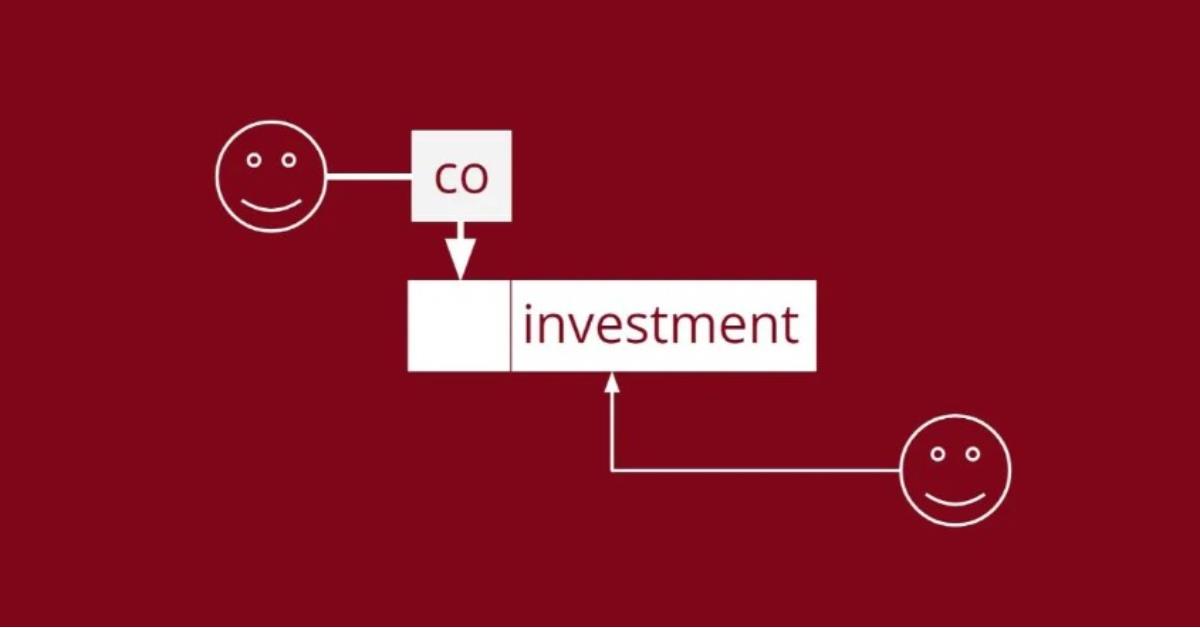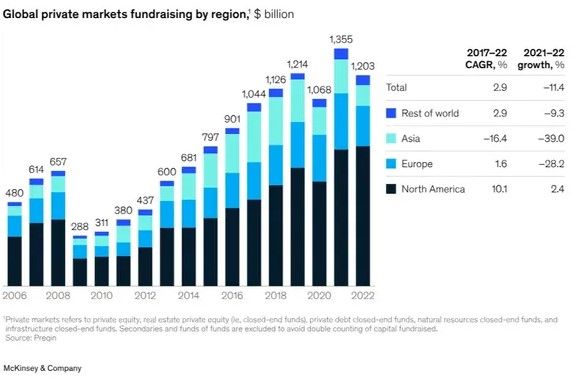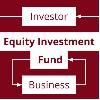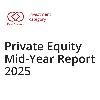Private Equity Co-Investments: What, How It Works, Pros and Cons.
Discover the advantages of private equity co-investments with Paperfree.com. Learn how co-investing can enhance your portfolio, diversify your holdings, and potentially boost your returns.last updated Tuesday, August 12, 2025
#co investment #co investment private equity
|
|
by John Burson |
Content Manager, Paperfree Magazine |

QUICK LINKS
AD
Get Access to Real Estate Investment Opportunities
Understanding private equity co-investments
What are co-investments?
A private equity co-investment is a joint venture between limited partners (LP) and general partners (GP) of a private equity (PE) fund. The two parties join to form a minority investment in a company separate from the fund. This is how a co-investment private equity allows other investors to join potentially highly lucrative investments without paying the typically high private equity fund fees.
.jpg)
Fig 1: co investment private equity, process
Where:
- Limited Partners are represented by institutional investors, including family offices, funds of funds, and foundations.
- The investment is a part of the alternative asset space.
Vital Details
Limited Partners are institutional investors, family offices, funds of funds, foundations, etc. This investment is part of the alternative asset space. There are three main types of co-investment transactions:
- capital growth initiatives,
- recapitalization,
- leveraged buyouts.
Examples of co-invest transactions
There are three main types of coinvestment transactions, including:
Example #1. AvCellera Biologics


On May 24, 2023, AbCellera Biologics made a C$701m co-investment with the British Columbia, Canada 🍁 government to invest in drug development and clinical research. As part of the co-investment agreement, AbCellera Biologics will co-invest C$401m, and the British Columbia government will contribute C$225 million and C$75 million over the next eight years.
The goal is to boost advancement in these sectors, benefiting Canada's prescription drug industry and creating hundreds of jobs for AbCellera.
Source - Reuters
Example #2. Mintec

Schroders Capital co-invested with growth investor Synova in a company called Mintec in April 2022, just before the Ukrainian crisis began and commodity prices increased.
Mintec sells software products to supermarkets and food companies. These businesses use this product to get real-time consultation of price trends of commodities not traded on the major indexes. As a result, food companies can make more informed internal decisions concerning suppliers.
Synova and Schroders Capital entered the co-investment in Mintec because they projected high returns from leveraging the 20-year-old software company's unique and dominant position in this food market niche.
Source - Schroders Capital
How does co invest work?
Limit partner investors to set co-investment goals.
The LP investor establishes the investment criteria, which include the expected return and the level of control. Setting clear goals in advance helps them match the best co-investment opportunity. A clear plan allows all parties to monitor the marketplace for timely and correct decisions.
.jpg)
Fig 2: co-investment goals
Communication GP<>LP.
LP investors in a PE fund often indicate whether they are interested in co-investment opportunities in the subscription agreement or a side letter attached to the fund. This LP disclosure is informational and does not affect any obligation to the fund's general partner.
GPs will offer co-investments to a select few or all the LPs. Co-investments may provide LPs with a more significant stake in investments of interest, with fewer investigations and procedures typically attached to an investment opportunity.
LPs also have access to more due diligence or GP materials on a co-investment than in the normal fund process, allowing for deeper insights and enhanced tailoring of LP portfolios. From a GP's perspective, the shared investment risk, increased access to investor capital, and deeper relationships with specific investors outside the PE fund are additional benefits to co-investments.
.jpg)
Fig 3: co-investment partners inform step
Setting up the legal framework.
A private equity fund should carefully establish the framework for a co-investment in the early stage. As a result, they can effectively communicate the plan to the LPs as soon as possible. GPs often accomplish this through a separately structured co-investment vehicle governed by separate agreements. The co-investment structure is similar to the governing documents of the leading PE funds. The nature of the co-investment relationship and the interplay with the PE fund should be accounted for, including the allocation of expenses and fee payments, apportionment of opportunities, voting, and management responsibilities.
.jpg)
Fig 4: setting a legal framework
Tax considerations.
Co-investment vehicles can be helpful for tax planning efficiency. Since all parties know the fund's tax and regulatory aspects at the time of the transaction, they can customize co-investment structures to account for tax-related considerations well in advance. The partners should always seek tax advice when addressing structure details, including providing management services, auditing, and reporting obligations.
.jpg)
Fig 5: Setting a tax framework
Compliance and other considerations.
Co-investment partners must address specific regulatory issues, including reporting requirements and compliance with securities laws. They may also face regulatory concerns that are transaction- or industry-specific. The most common problems include the telecommunications, gaming, and publishing industries. In addition, compliance with investment mandates and fund goals can create synergy between co-investors and fund interests.
.jpg)
Fig 6: co-investment compliance map
Cost negotiation.
Costs to the investors, including transaction fees, payment of carry, and management fees..jpg)
Fig 7: negotiate the cost
Co-Investment vs. Joint Venture
| Perspective | Joint Venture | Co-Investment |
|---|---|---|
| Benefit | Enter into new markets | Access private equity at low fees |
| Investment management | Collaboration | Managed by the fund manager |
| Benefit | Enhances the capacity and capabilities of partners | Portfolio diversification |
| Benefit | Shared risks and costs | Fund managers obtain regular incentives |
Table 1: comparing co-investment and joint venture models
Co-Investment vs. Direct Investment
| Perspective | Direct investment | Co-Investment |
|---|---|---|
| Number of investors | Multiple investors partnering with a deal fund manager | Single investor |
| Risk management | A single investor owns the risk | Risk is spread between investors |
| Investment management | Managed by an independent investor | Managed by the fund manager |
Table 2: Direct investment vs co investment
What are the benefits of co-investment?
Co-investment arrangements can benefit and value both the fund's LPs and PE. And be attractive for a multitude of reasons, including:
LP Benefits
- Fee savings.
Co-investment offerings come with reduced economics compared to a traditional primary fund, thus providing the potential for more attractive returns. - Enhanced due diligence.
Double due diligence can impact performance. LPs' access to GP materials and enhanced due diligence enables them to understand better specific investments and strategies applied across the entire portfolio. - Enhanced diversification.
Prominent investors can access many general partners and determine portfolio construction across managers, sub-strategies, sectors, and geographies. These advantages help LPs attain enhanced diversification and a larger share of desirable investments. - More control.
Co-investing is popular among investors who seek greater control of their fees and investment involvement. It also allows investors to engage more actively with companies, such as through sustainable practices and behaviors.
GP Benefits
- Operational efficiency.
The co-invest strategy needs fewer investors to communicate with and serve. For this reason, the smaller investing group positively impacts managers' operating model. - New working capital.
PE funds can access supplementary capital if they have designed vehicles and are ready to onboard co-investment transactions. - The speed of investment.
Managers can move faster, relying on fewer investors to comply. - More closed deals.
The co-investment strategy allows funds to make significant single investments inaccessible by any other means.
To summarize the pros of co-investment.
Investors who desire more control and involvement in their investments often benefit from co-investment. However, it is essential to consider the strategy's challenges.
The reasons for co-investment strategy growth
- LPs reported better performance from equity co-investments compared to traditional fund structures. Preqin's latest survey of fund managers and investors examines both parties' increasing co-investment appetite. It finds that 80% of limited partners have seen their co-investments outperform private equity funds.[1]
- GP uses co-investments to improve relationships with LPs, access more capital for deals, and improve the chance of a successful fundraiser. GP's co-investment offerings are also becoming more common.
- 87% of managers are either offering or considering offering co-investment rights to their investors.
- 30% of managers included co-investment rights in 81-100% of limited partnership agreements in their most recent fund.
What are the cons of co-investment?
Co-investment is a good option for investors wanting more control and investment involvement. However, it is crucial to consider the strategy's challenges. These are some of the cons you should be aware of.
- Market saturation.
The market for co-investors has become saturated, and the quality of co-investors varies widely. - Regulations concerns.
Instead of leading or underwriting the deals, most co-investors assume a passive role in their transactions. This practice has prompted the SEC to review co-investments and consider new regulations to address such differences. - Conflict of interest.
Another potential issue with co-investment is a conflict of interest. GPs may over-allocate co-investment opportunities to potential future fund investors, leading to "sweet deals" and an unfair advantage. Furthermore, when co-investors dilute the stakes of significant fund investors, potential conflict can arise within the fund structure. - Fast-paced environment.
Co-investment ventures require co-investment partners who can make quick initial decisions. They must also be able to monitor, review, and adapt to rapidly changing information. Partners accustomed to a slower pace assume the risk of making costly errors.
Co-investment Update 2024
Private equity is in a cooling period.
Global private equity markets fundraising has slowed down. It reached its highest-ever peak in 2021 before trending down in 2022, ending a decade of growth. On the other hand, co-investments are on the rise. According to Pitchbook data, the total capital raised for co-investments with PE investment managers has increased from 4 billion US dollars in 2010 to 10.3 billion US dollars in 2022.
Behind the decline in global private markets.
2022 was a high-inflation year, pushing worldwide central banks to increase interest rates at a historic pace. Quantitative tightening and dislocation in asset prices raised fears of an economic slowdown. The Russian/Ukraine war and humanitarian crisis enhanced the global economy's risks.
Public markets sold off substantially.
Private markets remained relatively optimistic in the year's first half but followed the public market in the second half. These disruptions had substantial and varied impacts on private markets' fundraising, performance, and AUM growth, with steep declines in specific regions and strategies and pockets of resilience in others.
The most significant decline in private market fundraising was in Asia and Europe.
North America's market experienced a slight increase (Fig. 8).

Fig 8. Global markets fundraising.
During 2022, the number of private equity funds decreased significantly from 1,129 to 597. This occurrence was due to LPs becoming more careful about investing money and concentrating on experienced managers.
LP's investments shifted into larger vehicles as investors re-upped with existing managers while avoiding commitments to smaller and newer managers.
Newly established managers also faced significant challenges in raising funds for their first private equity funds, reaching their lowest point in the past nine years.
The emergence of the co-investment market
To fill the equity gap, GPs turned to the co-investment market. This strategy also enabled PE managers to dedicate additional time to raising capital for their subsequent commingled funds. Additionally, some GPs used co-investments to diversify their portfolios and extend their investment period, allowing them to be out of the market for longer.
Moreover, debt became scarcer in 2022, increasing the demand for co-investments. As a result, the debt crunch and the cost of debt to fund buyouts motivated LPs to seek decreased fund fees and equity financing fees.
Family offices and their impact on the co-investment marketplace
Family offices lead the LP's team.
The inclination towards co-investment is robust, with almost two-thirds of institutional investors planning to invest alongside their GPs over the next 12 months. Family offices use the co-investment strategy with multiple approaches, such as "club" deals." It unites various families to invest alongside a PE fund without investing in it. Also, a family can collaborate with another family to invest in a business.
Globally, 42.5% of family offices are already engaging in co-investment activities. While PE and other fund structures may still be suitable for families who want to invest in less-familiar industries, the family office industry is a more personal and relationship-oriented approach than institutional investing. As a result, families are more likely to co-invest in projects and assist each other in finding investment opportunities.
Conclusion
Co-investments are essential tools for general partners and the fund's limited partners. In the right circumstances, they can provide the potential for higher returns for funds and LPs. Co-investments also offer greater transparency and control than PE funds.
In addition, they allow limited partners to invest in hand-picked, specific deals. However, co-investments have a significant exposure to risk and level of competition that only skilled PE partners should assume.
Important information
The views and opinions herein belong to Paperfree teams and are subject to change. This information is for informational purposes only and is not for promotional use.
References
- How do private equity co-investments work, and what are they used for?
https://www.schroders.com/en-us/us/institutional/insights/how-do-private-equity-co-investments-work-and-what-are-they-used-for-/ - 80% of Private Equity Investors See Their Co-Investments Outperform Commingled Funds https://www.valuewalk.com/80-of-private-equity-investors-see-their-co-investments-outperform-commingled-funds/
- The advantages of private equity co-investments
https://www.blackrock.com/institutions/en-us/insights/the-advantages-of-private-equity-co-investments - Co-investment: a promising alternative to traditional private equity vehicles?
https://www.ey.com/en_lu/private-equity/co-investment--a-promising-alternative-to-traditional-private-eq - The Rise of Family Office Direct and Co-Investing.
https://www.affinity.co/blog/family-offices-direct-investing - Equity Co-Investment: Definition, How It Works, Benefits
https://www.investopedia.com/terms/e/equity-coinvestment.asp - McKinsey Global Private Markets Review: Private markets turn down the volume https://www.mckinsey.com/industries/private-equity-and-principal-investors/our-insights/mckinseys-private-markets-annual-review
- Private equity funds and co-investment: A symbiotic relationship
https://www.nortonrosefulbright.com/en/knowledge/publications/12c81c8a/private-equity-funds-and-co-investment
More content on a subject
Co-investments: benefits, pitfalls, and key indicators
by Apurva Mehta, Managing Partner at Summit Peak Investments
Pages Related to #co investment
- MVA2, Multifamily Value Add Fund by Paperfree.com

- The Real Estate Private Equity Guide. How does PE Real Estate Work?

- Invest in Real Estate Private Equity

- Understanding Equity Investments: How They Work and Why They Matter | Paperfree.com

- Industrial Real Estate Investment Guide 2025 | Complete Strategy & Returns Analysis

- Private Equity Mid-Year Report 2025: Market Trends & Industry Analysis

- Semi-Liquid Funds: Evergreen Compounding Returns

- What is Dry Powder in Private Equity? Complete 2025 Analysis & Market Guide

Popular Page
Private Real Estate Funds - Investments to Drive Income and Capital Growth
Book a Free Complimentary Call
real estate investing Investment Visa USA Investment Magazine Private Real Estate Funds real estate funds
